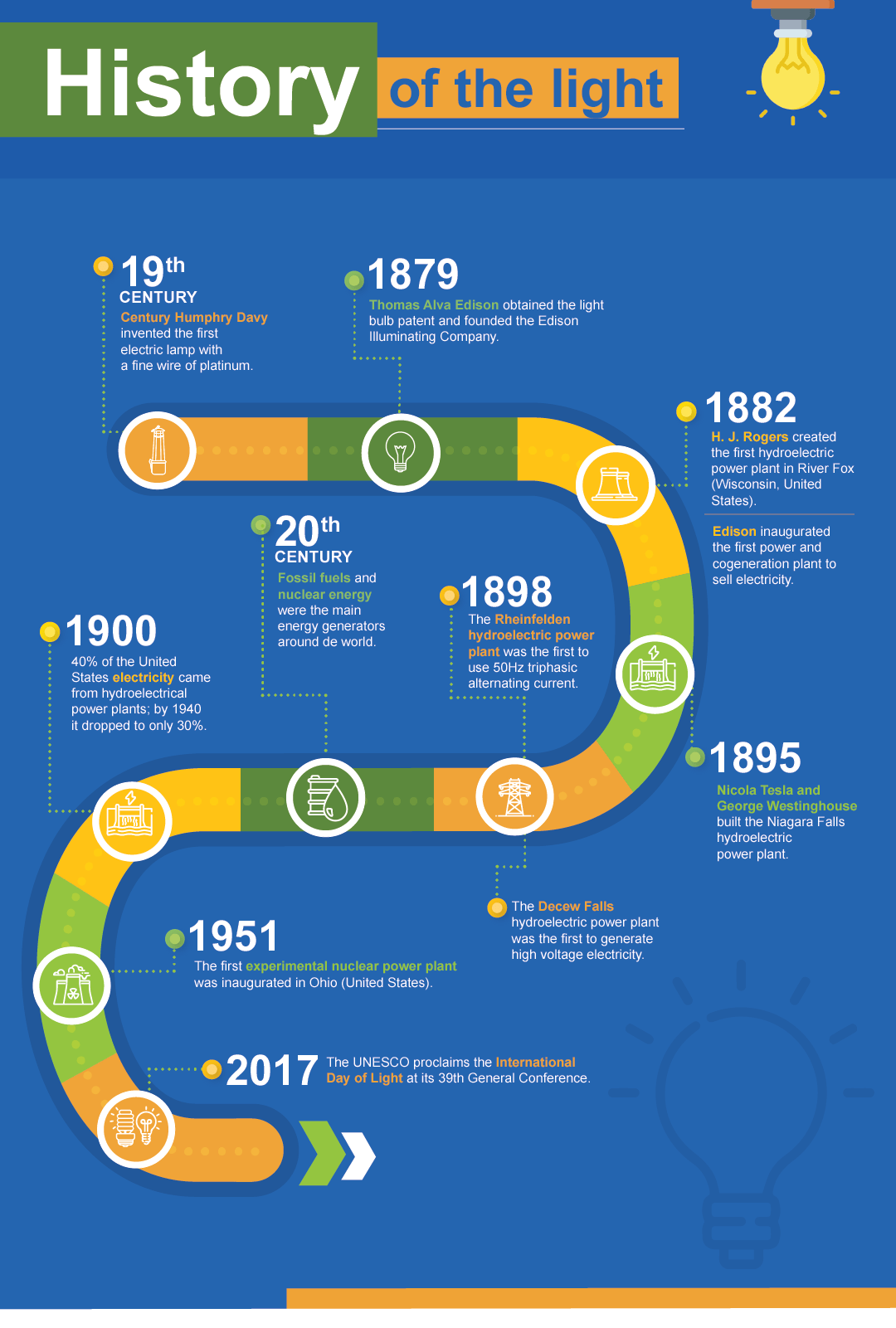Light plays a core role in the life of every being since there lies the origin of life itself.
The International Day of Light declared by the Unesco, celebrates this May 16 the role of light in science, culture and art, education and sustainable development in diverse fields like medicine, communications and energy.
All natural benefits and scientific and technological applications make light a critical element in daily life and the enhancement of light is an important challenge to the Sustainable Development Goals (SDGs) of the UN 2030 Agenda.
“Questions related to access to light through electricity to improve the standard of life in developing countries, or to fiber optic, are particularly crucial”, the Unesco director general, Audrey Azoulay, stressed.
What is electricity?
Electricity is part of nature, and it is essential for many biological processes. Who has not been ever amazed with a lightning in the middle of a storm?
This phenomenon is linked to matter and to life because everything is made up from electrons that spin around the nucleus of atoms.
The human being is also electricity since both neurons and the spinal cord function through electrical impulses.
Nevertheless, to use electricity –which may not be collected as such from nature– man must generate it with the resources offered by the planet.
Who invented the light?
As we know, electricity and light work together. But other than what has been popularly established, the inventor of electricity was not Thomas Alva Edison (1847-1931).
Early in the 19th century, for example, English chemist Humphry Davy invented the first electric arc lamp when he achieved the incandescence of a fine wire of platinum.
Edison was neither the first person to patent the incandescent light bulb. Other inventors had already invented it more than a decade earlier, but his is the only one commercially viable.
After obtaining the patent in 1879, he founded the Edison Illuminating Company and in 1882 inaugurated the first electric power plant to sell electricity to his light bulb customers. He soon expanded his business, and in only two years he already had 500 customers -including The New York Times- and 10,000 light bulbs.
It was not only the first power plant, but also the first cogeneration plant since steam was used to heat surrounding buildings.
That same year, industrialist H. J. Rogers created the first hydroelectric power plant in Fox River (Wisconsin, USA).
How did power generation evolve?
The first electric power plants operated with direct current, which prevented energy from being carried over long distances. Another genius solved the problem: Nicola Tesla and his commitment to alternating current.
In 1895, he built the Niagara Falls hydroelectric power plant together with industrialist George Westinghouse, bringing electrical power to Buffalo City, which was 40 kilometers away. The electrification of the world had started and, with this, the second industrial revolution.
Two new projects drove this process in 1898: the Decew Falls hydroelectric power plant in Ontario (Canada) was the first to generate high-voltage electricity to be carried over long distances; and the power plant in Rheinfelden (Germany) was the first to use 50Hz three-phase alternative current: today’s standard almost everywhere around the world.
In 1900, 40% of the electricity in the United States came from hydroelectric power plants. In 1940, it was 30% while currently it is only 10%. In 1951, the first experimental nuclear power plant was inaugurated in Ohio (United Sates).
During the 20th century, fossil fuels (coal, natural gas or oil) and nuclear power plants replaced water to generate energy around the world.
Electricity is usually produced in power plants that rely on spinning turbines driven by steam heated by nuclear reactions or the combustion of hydrocarbons
Some plants also run on renewable resources, such as hydroelectric plants (which use falling water or sizeable waterfalls), wind farms (which rely on the force of the wind captured by wind turbines), or solar farms (using panels made of semiconductor metal sheets called photovoltaic cells, which receive the sun’s radiation). When electricity is generated in any of these plants, it is transmitted along power lines to factories and population centers and can also be stored.
Clean energies, in Iberdrola México’s DNA
Generation of electricity that reaches our houses and the different industries has expanded, and its main challenge today is to replace fossil fuels with renewable sources such as the wind (wind energy), the sun (solar energy), or wave power (tidal energy).
With more than 100 years of history, Iberdrola is a pioneer in the development of clean energy from renewable sources, such as the sun or the wind.
All of this without forgetting new processes like green hydrogen, which is based on hydrogen production —a universal, light and highly reactive fuel— through a chemical process known as electrolysis.
This method uses electrical current to separate hydrogen from the oxygen in the water. Hence, if electricity is obtained from renewable sources, we will produce energy without emitting carbon dioxide into the atmosphere.
Currently, Iberdrola’s renewable energy facilities in Mexico total 10 farms: 7 wind farms (693 MW) and 3 solar farms (470 MW), which use the country’s excellent solar radiation, as well as the winds, in states including Puebla, Oaxaca, Guanajuato, San Luis Potosí, and Sonora.
Electricity as a social and development factor
But electricity generation goes far beyond offering a service that will allow to have light at home or turn the TV on.
Electricity -as noted by the Unesco- is a development vector for companies.
True to this maxim of using technology to bring down inequality, Iberdrola México has in place the Luces de Esperanza (Lights of Hope) program, which started in 2019. With an investment of nearly 80 million pesos, the program intends to Benefit over 12,000 people in about 60 remote communities in the Huasteca Potosina and Oaxaca, among other regions in the country.


